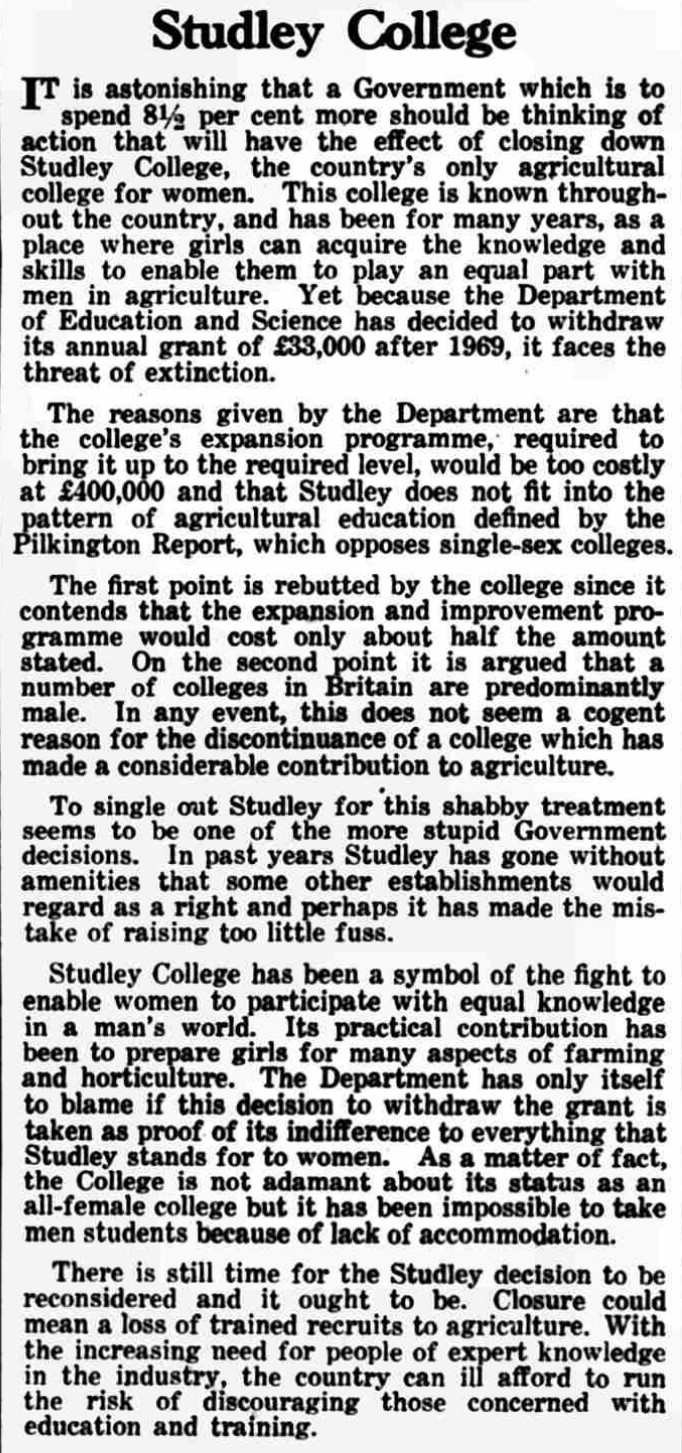If you haven’t previously read about Daisy Greville, Countess of Warwick, then you’re missing some important information.
A socialite, she scandalised late-Victorian high society with her affairs. She was the inspiration for the music hall song Daisy, Daisy. She threatened to expose King Edward VII’s affairs until bought off by an industrialist, who was rewarded with a baronetcy. She featured in a notorious divorce case. She “benefited” (we’d call it insider trading now) from Cecil Rhodes’ intervention to make a fortune on investments in the Tanganyika Concessions. And, following a conversation with Robert Blatchford, she adopted radical socialist ideas, supporting the October revolution in Russia and stood, unsuccessfully, as an Independent Labour Party candidate against future catastrophic Prime Minister Anthony Eden.
Part of her radicalism was directed at education, and in 1898 she founded Warwick Hostel in Reading in order (according to the Studley Trust’s account) “to encourage educated women to work in light farming, gardening and rural occupations.” This was successful, and in a few years outgrew its buildings. The hostel moved to Studley Castle, in Warwickshire, and became the Studley Horticultural and Agricultural College for Women. This was pioneering work: women were not at that time well-provided for educationally, let alone in specialised subjects.
The early years for the college were difficult, relying on much energetic fundraising. A measure of security was gained by the grant of a 21 year lease on Studley Castle; water and sewage was sorted out. And the name changed to Studley College.
After the 1914-1918 war, temporary accommodation was added, and a new head – now a principal, not a warden – was appointed. Emily Ekins put the College on a sound footing – students could study for University of London degrees, and the ministry of agriculture began to provide annual grant funding. The college purchased the freehold for the castle, again with government and philanthropic money, and more student accommodation was added.
After the second world war (where the students contributed much to growing food for consumption), the college continued to develop, with more modern facilities and a greater range of programmes. In 1960 the Ministry of Agriculture, Fisheries and Food planned for a funded expansion to 150 students, from 100, and all looked well for the college.
But this was not to be – responsibility for agricultural colleges passed to the Department of Education and Science. The DES was happy with the quality and standards of the college, but the Committee on Agricultural Education, chaired by Harry Pilkington, came down against single sex education in technical colleges. And so the government decided, notwithstanding opposition in parliament, to withdraw the grant to Studley College.
Opposition was not just in Parliament. See, for example, the leader from the Birmingham Daily Post:

But money was money and closure was now inevitable. The last students left Studley in 1969, and the assets were sold. The Studley College Trust, the inheritor of the assets, seeks to encourage, assist and develop education, instruction and research in agriculture, horticulture, forestry and allied subjects and pay scholarships, grants and bursaries for the advancement of education and the maintenance of any student. But not, sadly, at Studley, which is now a hotel.












